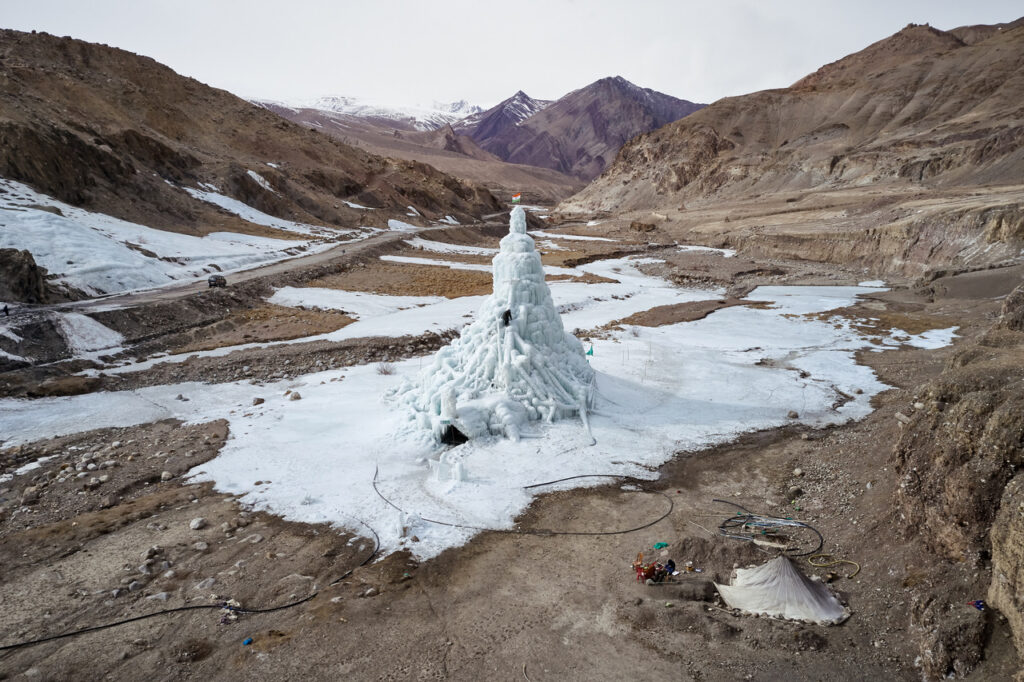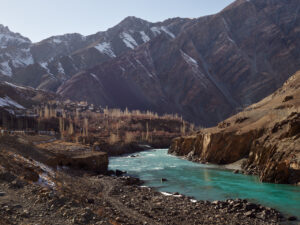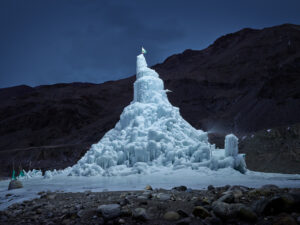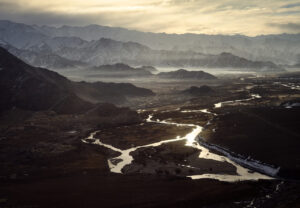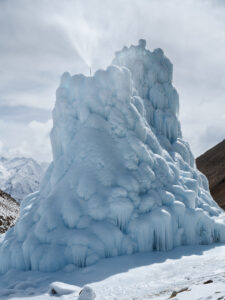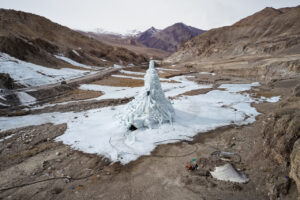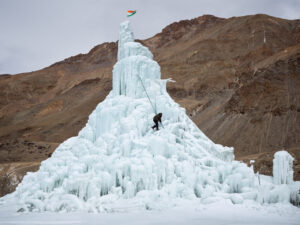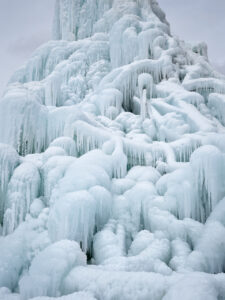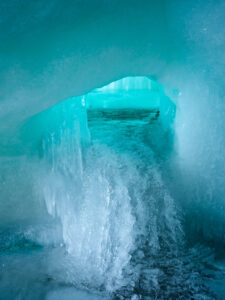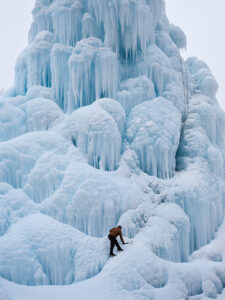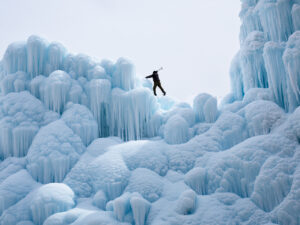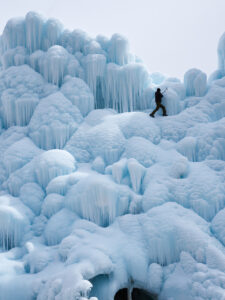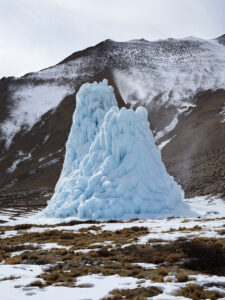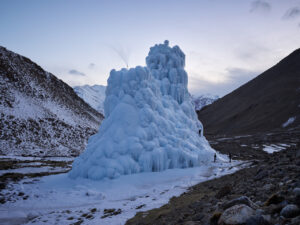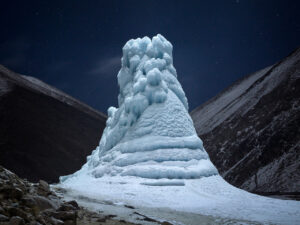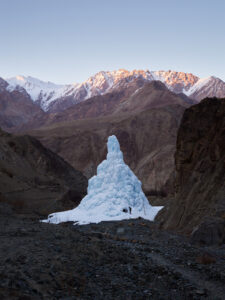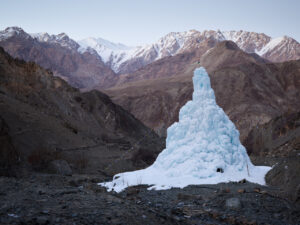At first glance, these gigantic cones could appear as curious temples, or some types of ice cairns erected on the mountain tops to indicate the end of a pilgrimage. But they are not. The towers’ frozen facade creates the impression of spiritual monuments, while their entrails reveal what ice stupas really are: technological prowess. Underneath their pointed roof lies the nozzle of the pipeline that streams back winter water to be congealed in the peaks of the Himalayas until spring.
This invention requires neither power nor pumps, it is nature-inspired and community-driven.
With climate change and pollution, the glaciers shrink and fail to irrigate crops and to provide clean water to the surrounding villages as the weather warms up. The pressure-based system of stupas allows to pipe unused and abundant mountain water. The latter is then stored into conical ice hills which shape slows down the melting process and ensures watering during warm seasons.
Photographer Greg White traveled to Ladakh, India, where the first ice stupas were built as a solution to the water crisis.
